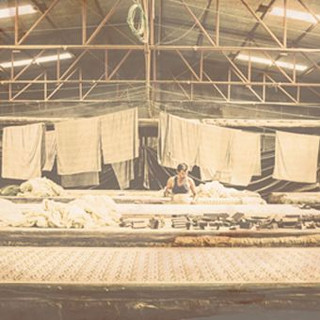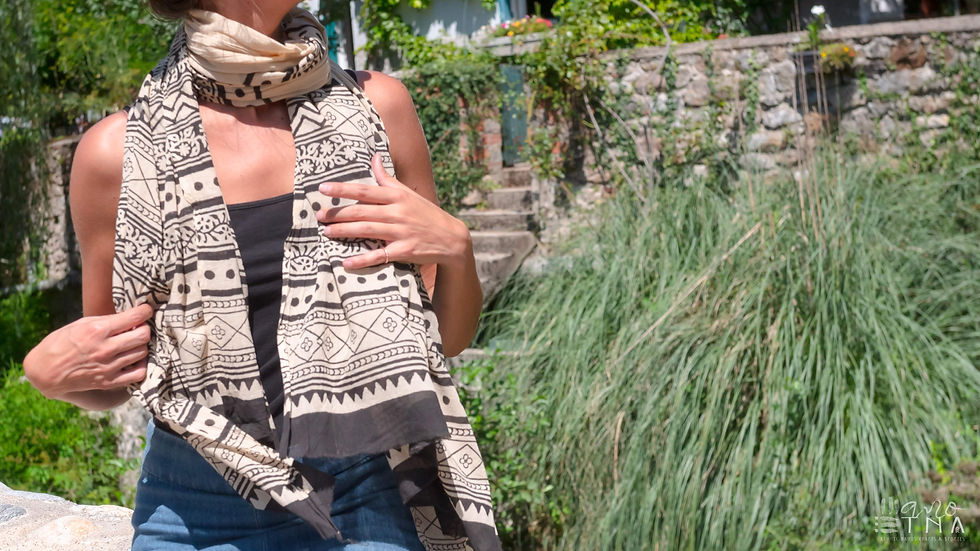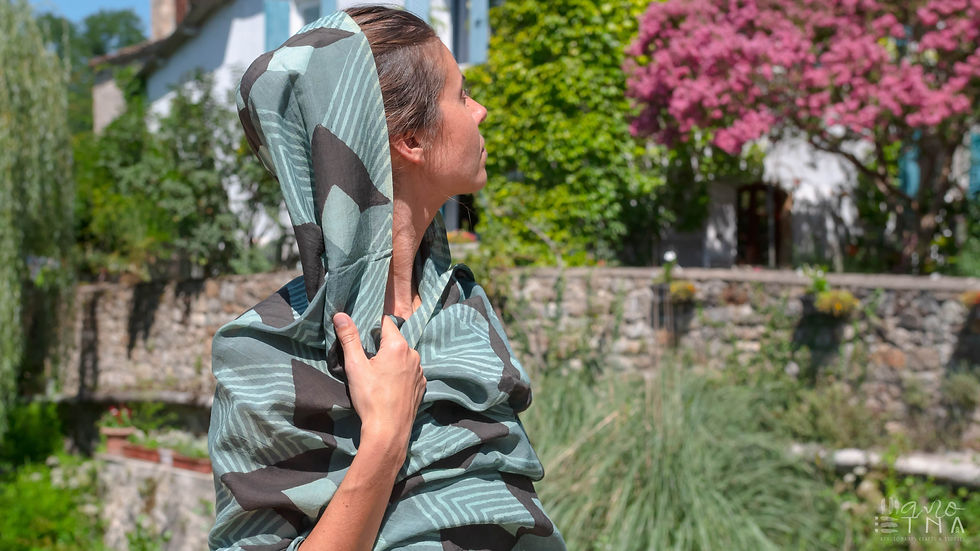

CHAPTER I . PRINTED TEXTILES
Bagru Block Print

Bagru is known for centuries for its natural dyeing, syhai begar printing, indigo dyeing and wooden hand block printing.
THE BAGRU FROM THE CHHIPA, IN BAGRU
Bagru, a town at the outskirts of Jaipur, in Rajasthan is one of the textile hubs of India. It is known for centuries for its natural dyeing, Syahi Begar printing, indigo dyeing and wooden hand block printing.
Since at least 400 years, Bagru has been home to the Chhipa clan. If combining two Nepal Bhasa words, chhi means "to dye" and pa means “to leave something to bask in sun”.
This etymological theory feels especially true as you walk through the vast communal drying fields that connect the Chhipa Mohalla (the village printers’ quarters). The air here is redolent with the fragrance of drying fabric, the ground and the concrete walls are covered in oranges, blues, and pinks.
Everywhere you turn in Bagru there is a scene that will make you stop!
In traditional Bagru block printting, the cloth has a cream-coloured or a dyed base, the prints use natural and organic designs, but also incorporate geometric shapes - such as leher (waves), chaupad (checks), kangura (triangles), and jaali (a grid trellis pattern that might has been adapted from Islamic architecture).
SYAHI BEGAR TECHNIQUE
Syahi Begar is one of the traditional hand block print techniques where the prints result from the combination of red, black and yellow ochre or cream. Syahi black color is made by keeping the mixture of horseshoe iron, water and jaggery, in an earth pot for around 15-20 days during the summer; in the winter, it takes around 6 weeks to get ready. Then tamarind seed powder is mixed to this mixture and boiled.
Begar red color is made by mixing Alum (fitkari ), Madder (lal mitti ) and juice of babool gond.
This process involves pre-washing and soaking the fabric in fresh water and turmoil oil for 24 hours, in order to remove all starch, dust or other contaminants.
The fabric is then beaten, to remove leftover dust, and dyed in the Harda (merubelum powder) solution to allow the natural dyes to adhere to the fabric and become colorfast. The typical yellow dye or colour is obtained from the Harda fruit.
THE PROCESS
The Harda dyed fabric is spread on long padded printing tables, ready to be hand-printed. Printing always moves from left to right. The printer dips the wooden printing block in the tray of colored dyes, then applies it carefully onto the fabric, taking care of corners. While tapping the colored block onto the fabric, the printer has to pay a special attention so that dye does not spill over the fabric.
The process is repeated all over again in three sub steps: first with the Gadh block for the background, then with Rehk block is used for fine outlines, and finally the Datta block fills in the motifs (there can be more than one Datta block to fill in different colours).
After the printing is complete, the fabric is left to dry for 2 to 3 days and then washed 3 to 4 times in fresh water.
Next, the fabric is boiled in a large copper pot (bhatti ) for about 5 hours, in a mix of natural ingredients like alizerine (aal ki lakdi) and sakura flower (dawariaka fool ).
After boiling, the fabric is washed once again to remove the excess alum (fitkari ) and... it's ready!

1.

2.

3.

4.
Wood blocks are hand carved or chosen within a generations collection.
The fabric is dipped in yellow "harda" and sun dryed.
The patterns are printed onto the the cotton fabric.
Printing is repeated, on and on, with 3 different blocks.

5.

6.

7.

8.
Printed fabric dries for 2-3 days,...
... is washed 3-4 times,...
...and then boiled for 5 hours.
The fabric is again washed, dried , and it's ready!
BAGRU BLOCKPRINT
Shop
GOOD TO KNOW
Mano Etna products

100%
handmade
sustainable materials
preferred















